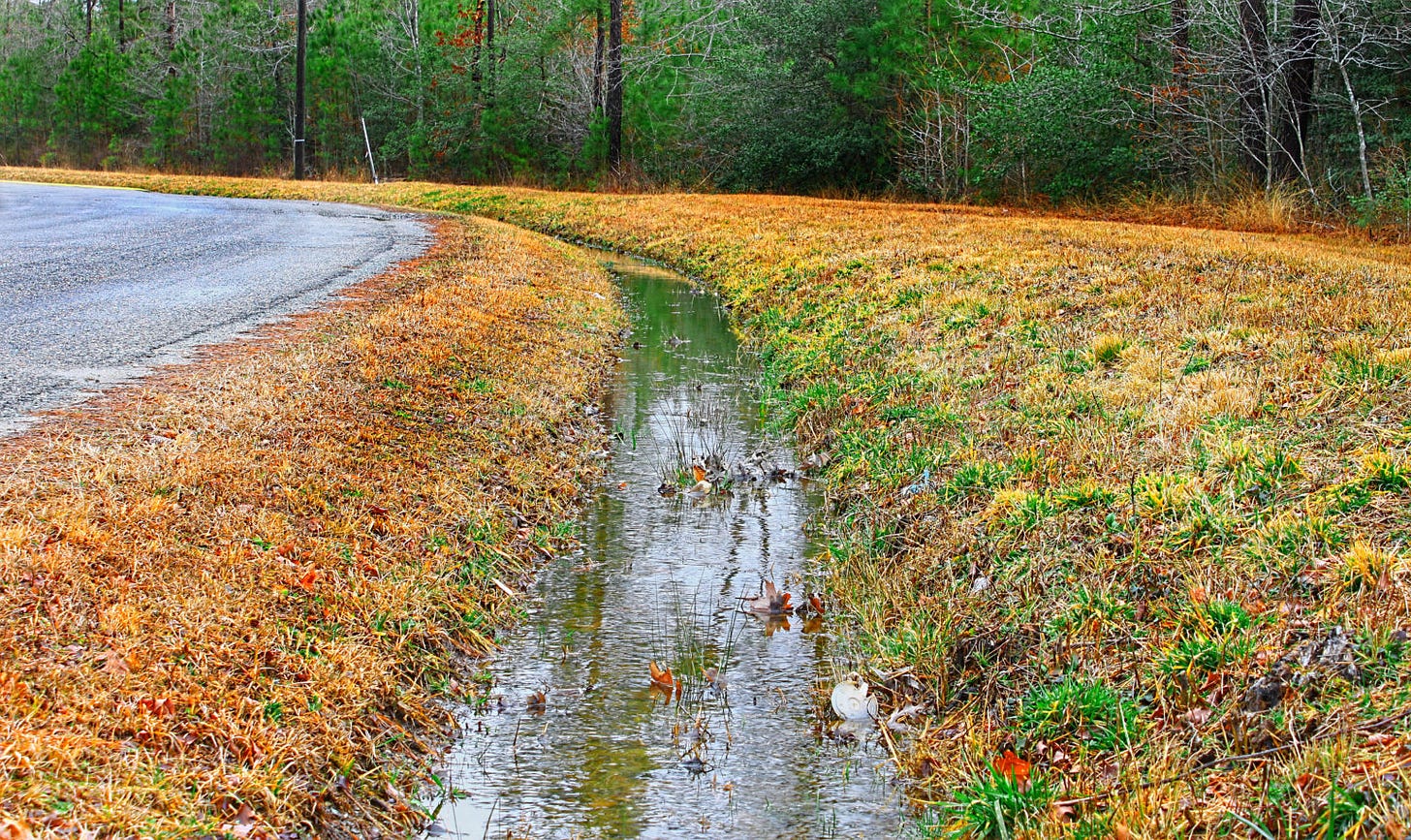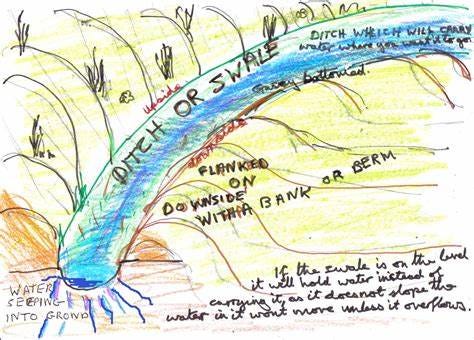#55: How to Design Infiltration Swales
A Comprehensive Guide for Managing Water Volume and Quality
In the quest to create sustainable and resilient landscapes, the design and implementation of effective infiltration swales stand out as a cornerstone practice. These engineered channels not only mitigate the impacts of stormwater runoff but also enhance water quality, contributing to the overall health of the ecosystem. This guide is crafted to provide landscape architects, urban planners, and environmental engineers with a detailed, step-by-step approach to designing two distinct types of swales: those aimed at managing water volume (WQV swales) and those focused on improving water quality (WQF swales). By following this guide, professionals can ensure their projects contribute positively to the environment, promoting groundwater recharge and protecting water bodies from pollution.
Step 1: Preliminary Site and Soil Assessments
Before diving into the specifics of swale design, a thorough understanding of the site conditions and soil characteristics is essential:
Catchment Area Analysis (Ac): Determine the size and characteristics of the area from which stormwater will be directed into the swale. Consider land use, topography, and existing drainage patterns.
Soil Infiltration Rate (fp): Conduct soil tests across the site to determine the infiltration capacity. Sandy soils typically have higher infiltration rates compared to clayey soils. This rate is crucial for sizing the swale and determining its infiltration capabilities.
Rainfall Data and Hydrology: Analyze historical rainfall data to understand the intensity, duration, and frequency of storm events in the area. This information will help in estimating the volume and rate of runoff that the swale will need to manage.
Step 2: Designing Water-Quality Volume (WQV) Swales
WQV swales are designed to capture and temporarily store runoff from storm events, allowing it to infiltrate into the ground, thereby reducing the volume of water that reaches water bodies downstream.
Site Suitability and Design Objectives
Ideal for areas prone to flooding or where reducing peak flow to downstream water bodies is a priority.
Aim to manage a specified volume of runoff, typically based on the stormwater regulations in the area.
Calculation and Design Procedure
Determine the Design Runoff Depth (d0): Based on the local rainfall data and the catchment's characteristics, calculate the depth of runoff that the swale needs to manage for a designated storm event.
Swale Sizing and Configuration:
Length (L) and Width: Size the swale to accommodate the calculated runoff volume, ensuring the length is adequate to allow for full infiltration within a specified timeframe.
Slope (S0): Design the swale with a gentle longitudinal slope (typically between 0.5% and 2%) to facilitate slow water movement and maximize infiltration.
Incorporate Check Dams:
Strategically place check dams within the swale to segment the runoff volume, enhancing infiltration. The spacing and height of these dams should be designed to ensure all ponded water infiltrates within 24–72 hours.
Performance Monitoring and Maintenance
Regularly inspect the swale for signs of erosion, sediment buildup, and vegetation health. Maintain clear and functional check dams to ensure the swale continues to meet its designed volume control objectives.





